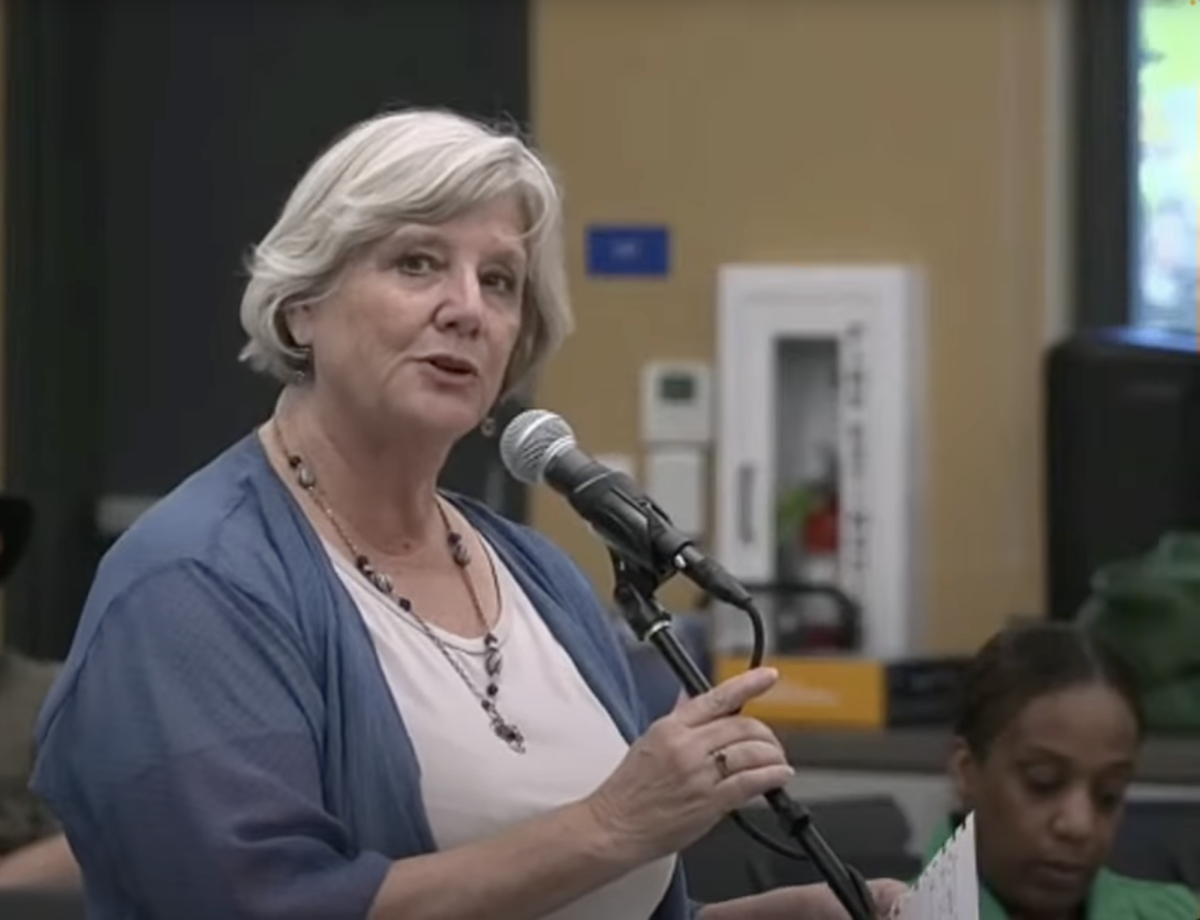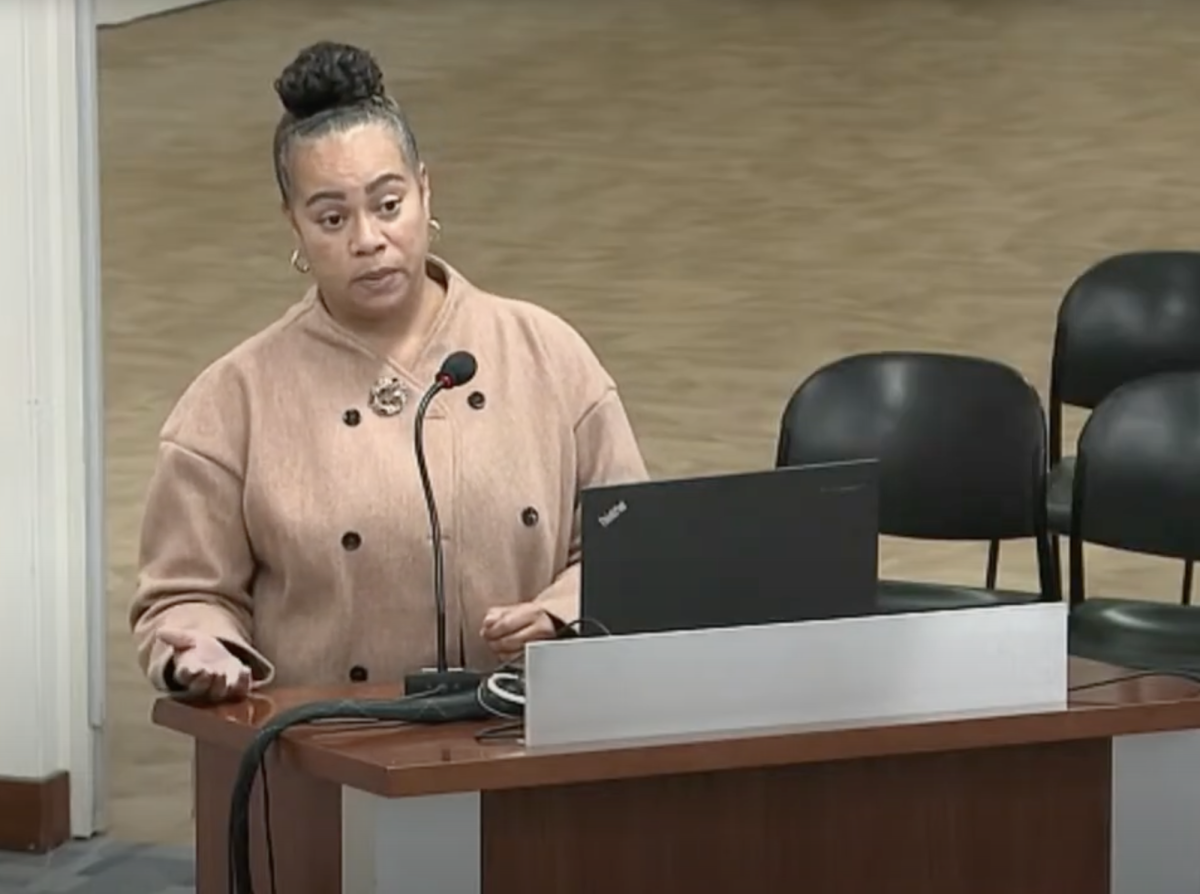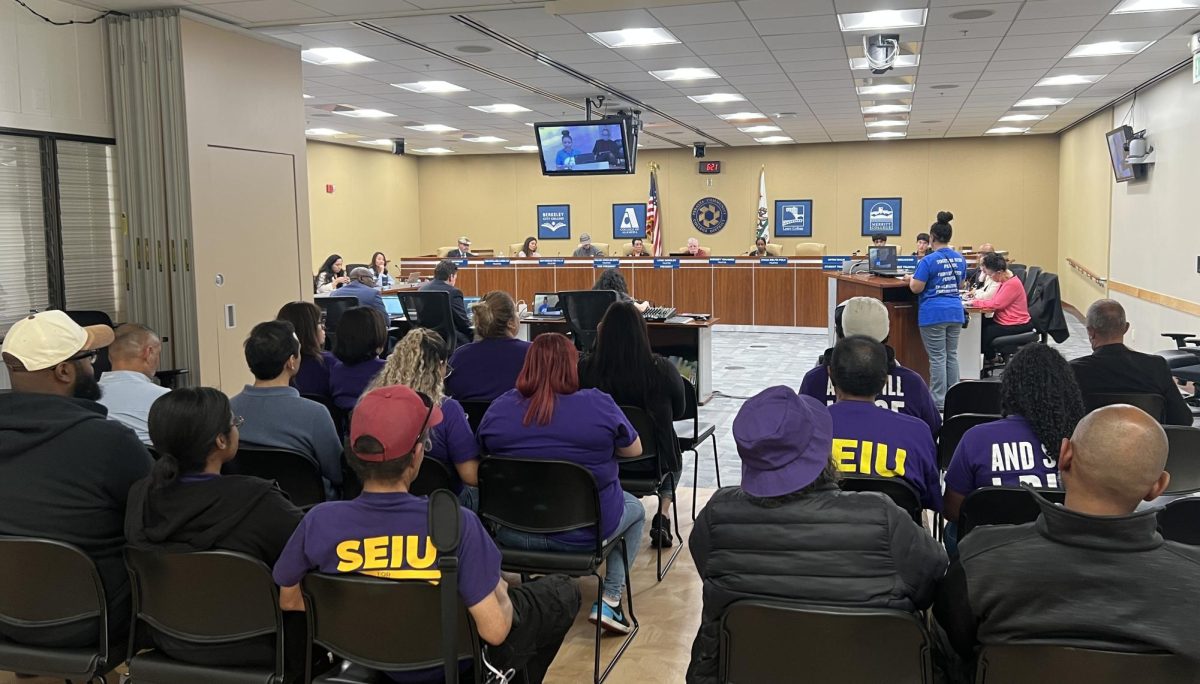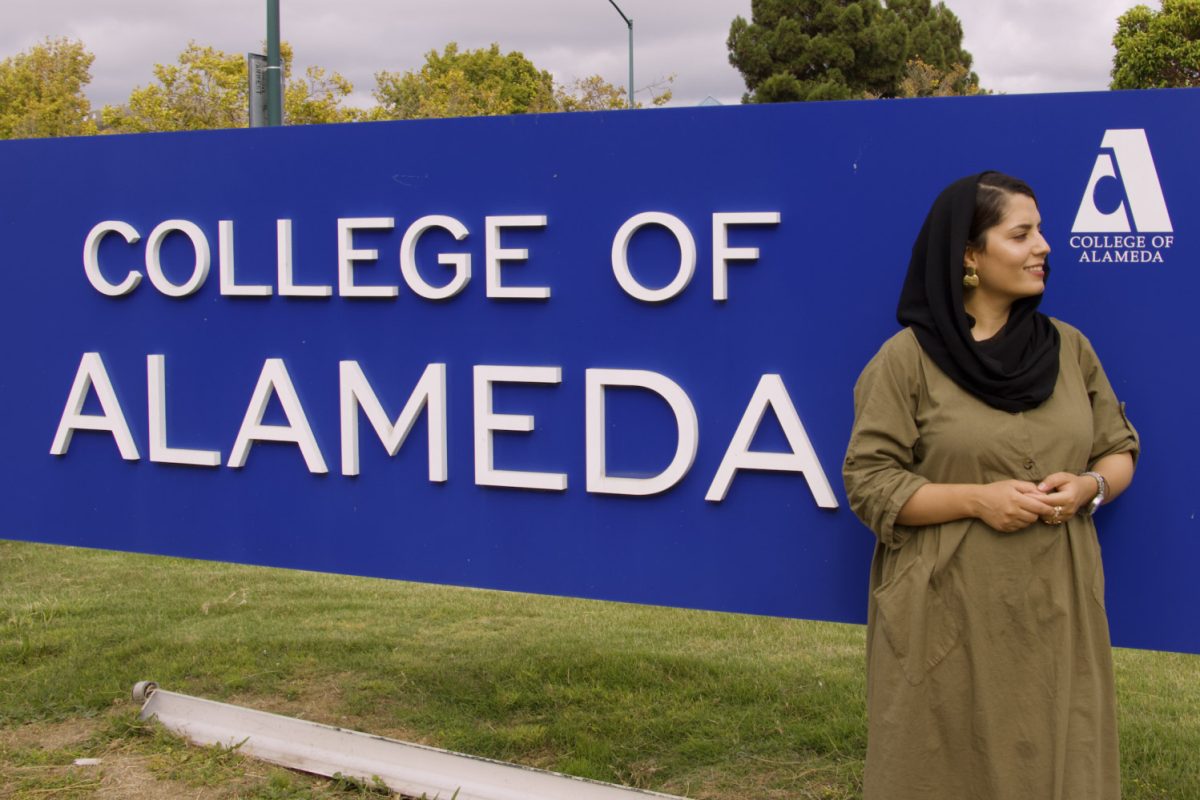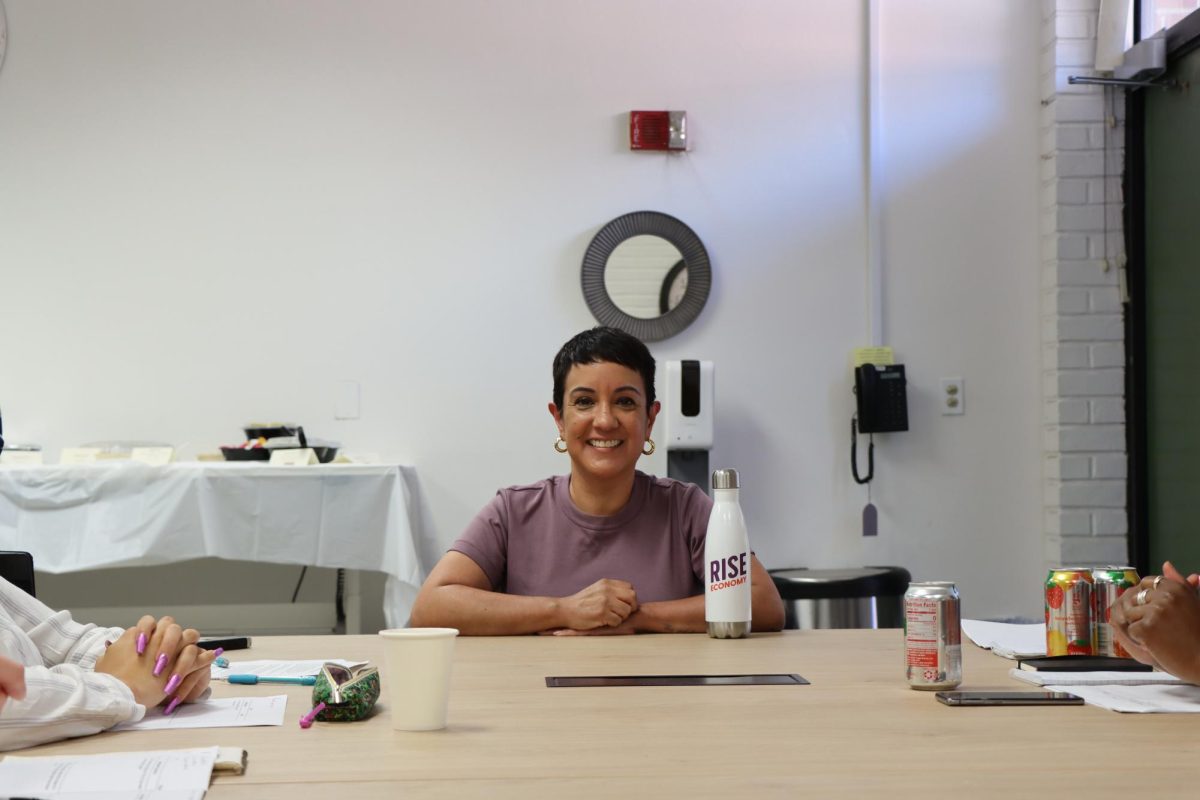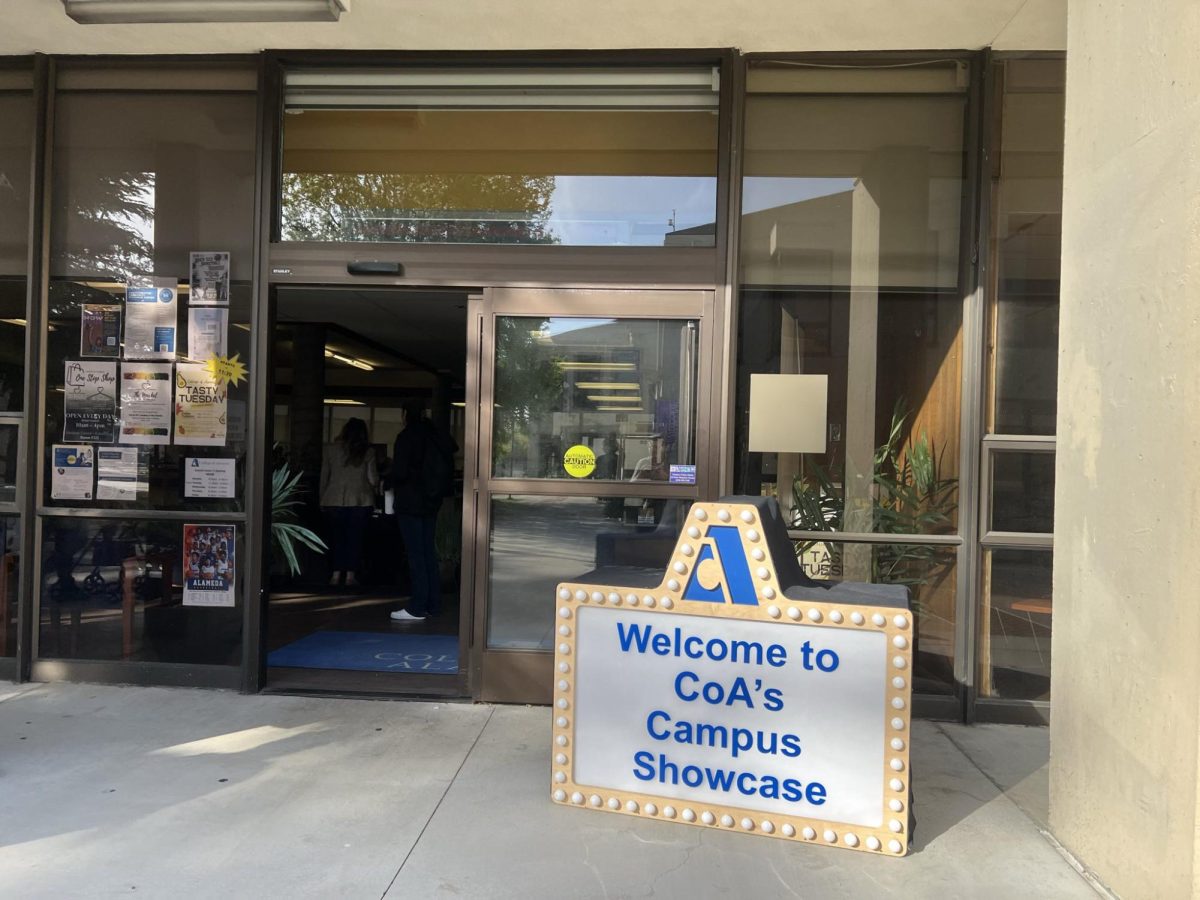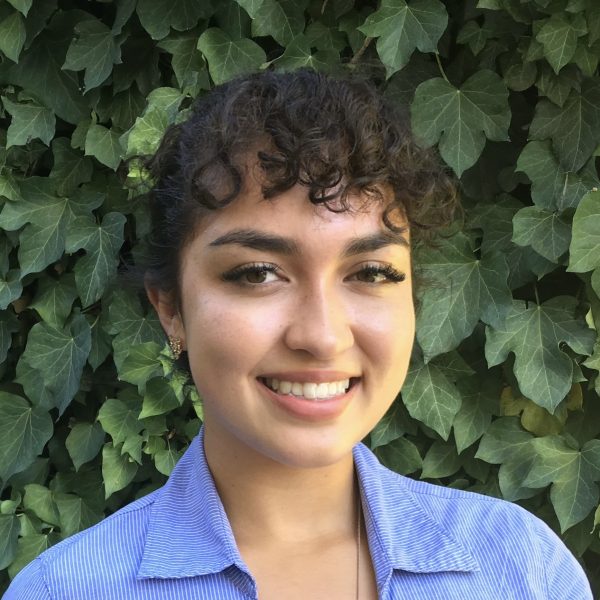The Peralta Board of Trustees convened at the College of Alameda (CoA) on April 22 where CoA showcased two of its programs and reviewed the annual student success and equity data report.
CoA President Melanie Dixon began the campus showcase by introducing CoA’s Apparel, Design, and Merchandising (ADAM) program and Basic Needs Center.
College of Alameda’s fashion and design program
Derek Piazza, Department Chair for the ADAM program, shared numerous student success stories and student portfolios completed during their time with the program. He noted that several ADAM alumni have moved on to create their own clothing brands and work in high-design positions for companies like Lululemon, Levi’s, Athleta, and Eddie Bauer.
“Our students come to life in our program. We get to see them grow creatively,” Piazza said.
Collaborations with the Digital Fabrication Lab, known as the FabLab, have also yielded success stories for the department. FabLabs provides a space for students, faculty, and staff to work on creative projects using equipment such as 3D printers, laser cutters, vinyl cutters, a waterjet, and an embroidery machine. There are two labs located at Laney College and CoA respectively.

Hannah Gilson, a 2025 ADAM graduate, launched her online brand utilizing unique fabrics that she made at the FabLab.
The ADAM program also collaborates with various local high schools like Oakland School of the Arts, Oakland Technical High School, Oakland High, and Skyline, to prepare and mold future generations of fashion designers.
Piazza announced that ADAM classes will be CSU transferable starting in the Spring 2026 semester, creating a smoother and cheaper pathway for students to obtain their Bachelor’s degree in fashion and merchandising.
Basic Needs Presentation
CoA’s Basic Needs Coordinator, Jeremy Simmons, presented on the various resources the Basic Needs Center provides to help “students meet [their] needs so they can focus on education”.
Students can receive various support resources at the center, including emergency food grants, Wi-Fi hotspot devices, and free professional businesswear. Simmons says the three pillar programs of the center are the Market, Tasty Tuesday, and the One-Stop Shop. The One-Stop Shop shares free food and clothing for students every day besides Tuesday.
According to Simmons’ presentation, the market has distributed food to over 1,200 students since Fall 2024.
He shared that the center recently expanded its programming to offer grants for student-parents, provide free professional clothing and school supplies, as well as free Clipper cards and gas money.
Simmons shared plans for the center, which includes creating focused support for students who are housing insecure.
“I’m working on trying to get a solution to housing funding, whether it be an emergency voucher to stay at a hotel or rental deposit assistance. It’s an ongoing problem, probably one of the hardest problems to solve,” Simmons said.
He noted that the center also has plans to expand add evenings to its hours of operation and seeks a larger location for the on-campus food pantry. Simmons said he is coordinating with CoA leadership to identify a new space.
Enrollment is growing with some demographics seeing big gains, while most students are online
Peralta’s Office of Institutional Resource held a presentation for the 2025 Student Success and Equity report, which showed data collected on student demographics, academic success, and correlations between the data sets.
The report focuses on things like student retention, graduation, enrollment rates, and self-reported demographic data by students to observe certain trends over the past few years.
According to the report, enrollment across the district has increased almost 11% since 2021-22 but has not yet reached pre-pandemic levels. Laney College has the highest enrollment of Peralta’s four colleges, while CoA has the greatest increase in enrollment. The district overall serves high numbers of LatinX, Asian, and Black students, who make up a majority of the population.
Students between the ages of 19 and 24 represent the largest age demographic. However, enrollment for students ages 25-34 and 55-64 experienced the largest spike.
The report also shows there is a significant increase in the number of students who identify as “non-binary”. This group grew from just 46 students in 2022 to 504 in 2025. Women still represent a majority of the student population at each college.
Peralta has steadily decreased its online course offerings, while in-person classes have increased. The data supports that students who attend in-person courses perform better than those taking online classes. Yet students still enroll in online courses at higher rates than in-person.
The team also presented qualitative data on students, including barriers to accessing community college for high school students. Some of these barriers included difficulties with finding resources, choosing career paths, or lacking encouragement to pursue higher education.
The April 22 board meeting can be viewed here.


